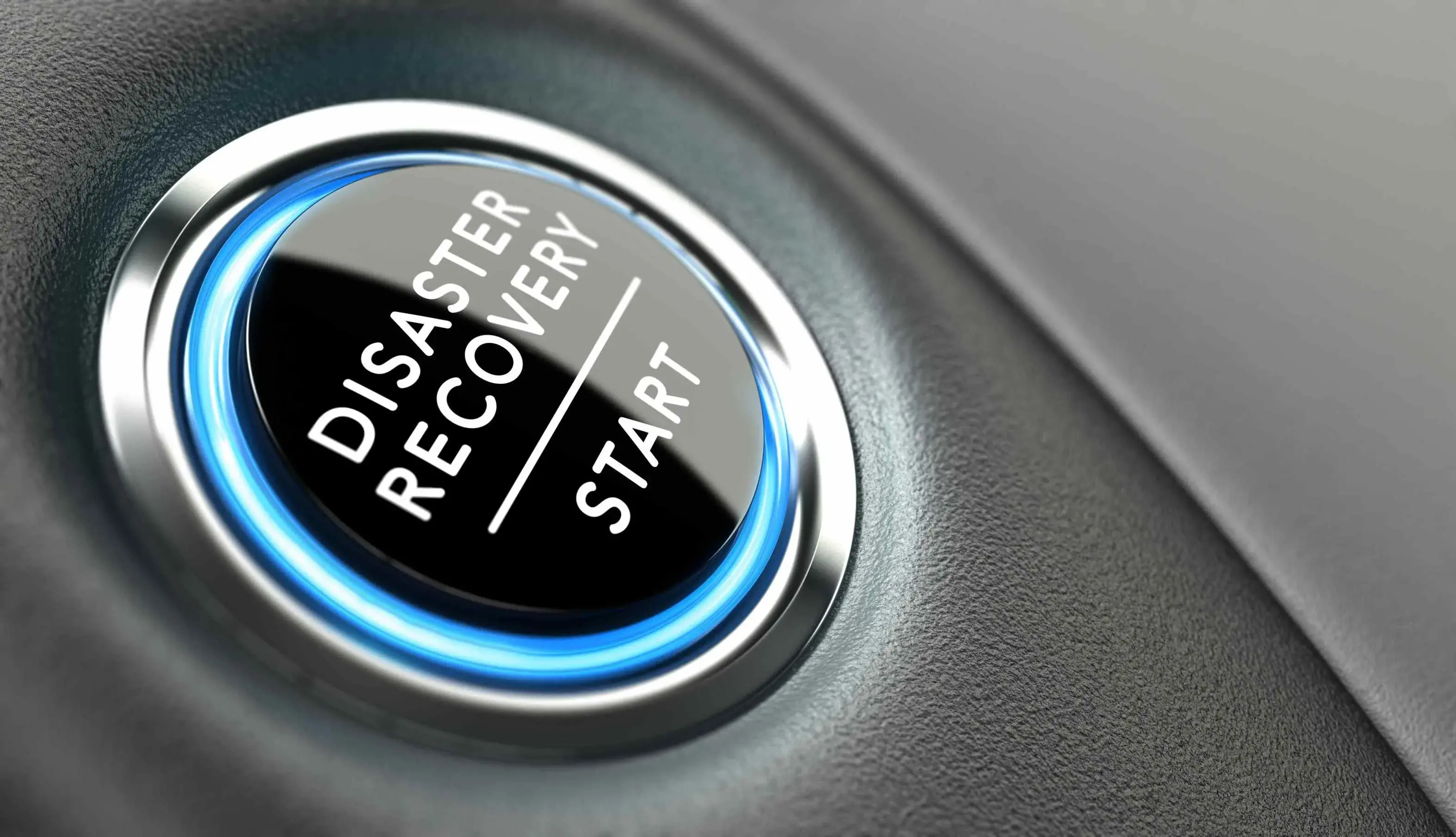Risks and disasters of all kinds, whether caused by man-made or natural events, are inevitable for organizations. Although it might be difficult to prevent these hazards, their effects can be lessened with the implementation of proactive measures and strategies.
Different types of disasters can affect a business, and they also depend on many factors, e.g., location. They may include calamities such as explosions, fires, infrastructure failures, and natural disasters like earthquakes and floods. They could also include data Framework Events such as blackouts, cyberattacks, breaches of data, and financial crises
Organizations cannot always prevent calamities, and this is why a recovery strategy is essential. There are several parts to a disaster recovery plan, and we will focus on one important part in particular in this article: disaster recovery sites.
Disaster recovery involves steps to prepare organizations or businesses in case of a crisis or disaster. Following several steps or methods can reduce the impact of these disasters on such businesses.
In this article, we will discuss disaster recovery and the different factors of disaster recovery, as well as disaster recovery sites.
What is a Disaster?
Any incident or series of events that prevent businesses from running or carrying out their respective operations can be classified as a disaster. Catastrophes can cause businesses to lose a variety of things, such as revenue loss, and churn due to reputational harm and data loss.
What is Disaster Recovery?
Disaster recovery refers to the procedures and policies that organizations put in place for their IT infrastructure to address any disruptions caused by natural catastrophes, business-related challenges, or technology breakdowns. It serves as a risk mitigation approach, seeking to ensure the continuity of corporate operations in the face of unforeseen obstacles.
Every business has or must have a business continuity plan, which is a strategy for ensuring that a business can prevent or recover from disruptions to its operations. Disaster recovery plans and business continuity plans are linked because they address the recovery of business operations during a crisis. However, a disaster recovery plan is specific to data and IT recovery systems.
Before an organization decides what its disaster recovery strategies would entail, there must be an analysis of assets. The different factors involved in disaster recovery may include:
1. Risk Assessment and Critical Analysis: During this process, you would need to:
- Identify key business assets and processes
- Understanding the impact of a disaster on business assets and processes
- Define the likelihood of occurrences.
2. Identifying Critical Systems and Dependencies: Identifying dependencies between systems is essential to prioritizing the order of recovery.
3. Establish Recovery Objective: Determine the Recovery Time Objective (RTO) and Recovery Point Objective for each critical system. Questions like what is the acceptable downtime, how long would it take to recover the system, and how much data loss can be managed must be taken into account.
4. Assign Roles / Communication Plan: Determine who’s accountable during the disaster recovery process. Also, outline a communication protocol, ensuring stakeholders and consumers are properly informed during the crisis and recovery period.
5. Develop a Written Plan: Create a written plan that comprises the steps required for disaster recovery which is accessible by the DRP team.
6. Train and Educate Employees and members of the DRP team to be familiar with the plan and the roles they play. Also conducting training sessions helps to keep employees informed and prepared during a crisis.
7. Test and Update DRP: DRP should be tested and updated to verify its effectiveness. This would also help to identify gaps or weaknesses in the plan making it easier to fix and update on time.
Importance of Disaster Recovery

There are several reasons why disaster recovery is important, and they include:
Prevent Data Loss and Protect Systems: Data is essential for the efficient operation of most businesses. A disaster recovery plan can protect businesses' or organizations' data from being lost or destroyed during a disaster.
Decrease Downtime: When a disaster occurs, this causes downtime. This means that operations would be halted, which could cause the organization to lose productivity, revenue, and reputational damage. A well-defined discovery plan can help organizations or businesses recover quickly during an event or after a disaster. Backups are essential so that data can be easily restored after a disaster.
- Improve Customer Satisfaction: Disaster recovery is important to maintain customer satisfaction because having a process in place in case of a disaster would ensure uninterrupted services, ensuring that the business continues operations.
- Compliance with Industry Regulations: Different industries have regulations that must be complied with, and some regulations are mandatory for disaster recovery and data protection. Having a disaster recovery plan saves you from being fined, ensuring that certain standards are met to prevent certain disasters from occurring. E.g. data breach
Disaster Recovery Site
The secondary site, also known as the disaster recovery site, is one of the aspects of a disaster recovery plan. This site serves as a data store, allowing for quick recovery in the event of a calamity. It essentially serves as a backup place for business operations if the original site becomes unreachable. These disaster recovery sites, which represent remote places where organizations back up all critical data, are critical components of the overall business continuity plan.
Types of Disaster Recovery Sites
Disaster recovery sites are categorized into three groups, which include:
- Cold Sites
- Warm Sites
- Hot Sites
Let’s take a look at each of the disaster recovery sites and what makes them different.
Cold Sites: A cold site is a backup facility; this site is a physical space that consists of utilities such as power, air conditioning, and networking capability needed by organizations to install the necessary equipment to resume operations. Cold sites are not expensive, but they require a long time for recovery. This is because there’s no hardware or software setup, which takes time to get ready.
The physical site could be a rented office space used as a backup location in the event of a calamity. This means that physical equipment would have to be delivered to the site, and connectivity would have to be established, including software installation etc., before operations could commence.
Warm Sites: A warm site contains the same setup as a cold site; however, the site is equipped with some hardware, software, and communication equipment. During a crisis, the organization would need to install additional equipment to restore data from backups. Because the site is partially set up with hardware, e.g., servers and network equipment, it takes less time to continue operations compared to cold sites.
Hot Sites: Hot sites are fully equipped and functional, set up similarly to an organization's primary site, and usually updated with real-time data.
This backup site is the most expensive because it contains all the hardware, software, and communication equipment. During a disaster, operations can be switched quickly to avoid major disruptions with minimal downtime.
| Cold Sites | Warm Sites | Hot Sites |
|---|---|---|
| Little or no hardware or equipment | Equipment and hardware are set up partially | Fully redundant equipment and hardware to ensure seamless failover |
| No network connectivity | Network connectivity is partially established | Network connectivity has been established |
| No data backup and No data synchronization | Data is synchronized daily or weekly | Real-time data synchronization |
| Not fully ready for failover | Failover occurs within hours or days | Failover occurs within hours or days |
| Least expensive | Cost-effective | Most expensive |
Factors to Consider When Choosing a Disaster Recovery Site.

Some factors determine the type of disaster recovery site that aligns with the specific needs of an organization.
Business Priorities: The business priorities or criticality must be taken into account when choosing a DR Site, For instance, if an organization's operations are time-sensitive, any downtime can disrupt the entire workflow, leading to potential revenue loss.
In such scenarios, a hot site is essential due to its capability for real-time data synchronization.
Budget: A budget is necessary when selecting a disaster recovery site, and organizations need to conduct a financial assessment to determine which site matches their financial capabilities
Location: The location of the disaster recovery (DR) site must be carefully considered. For instance, the DR site should not be near the primary location. This precaution is crucial to avoid simultaneous impacts in the event of a disaster such as an earthquake. If both the primary and backup sites are affected, operations may come to a halt until the business can fully recover.
Data Sensitivity: The sensitivity of data determines the frequency of required backups, which, in turn, influences the type of disaster recovery site an organization considers.
Recovery Time Objective: The recovery time objective determines the acceptable downtime for an organization. Taking this into consideration, the organization can decide which of the sites fits the recovery time objective. If the organization can afford a longer downtime, then a warm site can be considered.
Summary
There are numerous ways that disasters can happen and impact businesses. This can potentially result in massive financial losses for organizations, forcing them to shut down, or it might cause them to lose client data, leaving them vulnerable to fraudsters and hackers, among other threats.
Having a recovery plan in place is a failsafe in times of crisis. A hot site is usually the best option, but achieving one can be expensive. Not all of the sites are perfect, so choosing one depends on several factors, including the budget and how important the business is.
Frequently Asked Questions
Will my data be backed up?
Yes, our shared hosting packages offer daily backups.
What security is proved by the data host?
Your host will provide firewalls, antivirus and encryption as standard.
How does Verpex ensure the security of my CRM data?
Verpex employs multiple layers of security measures to protect your CRM data. This includes using advanced firewalls, secure data centers, regular security updates, and SSL encryption for data transmission. Additionally, we conduct frequent backups to ensure data recovery in case of any security incidents.
How do I respond to and recover from an XSS attack if my website is compromised?
Respond promptly by isolating affected systems, removing malicious code, and notifying users. Improve security measures, conduct a thorough investigation, and implement lessons learned to prevent future incidents.

Jessica Agorye is a developer based in Lagos, Nigeria. A witty creative with a love for life, she is dedicated to sharing insights and inspiring others through her writing. With over 5 years of writing experience, she believes that content is king.
View all posts by Jessica Agorye




















